Arts
Why plagiarism remains unreviewed and undiscussed in Nepal’s art scene
In a growing art community, understanding what plagiarism means and why it should be monitored and discouraged is crucial, say art enthusiasts and artists.
Srizu Bajracharya
For years, although unsaid and unexpressed, many in the art scene have had an understanding that art plagiarism exists in the country. But rarely has anyone been called out for it. The few times the conversation around plagiarism has been raised, it has died down quickly, never gaining the attention and seriousness the topic asks for.
An Instagram page, ‘the.art.detective’, however, is hoping to keep the conversation going. “Here to start conversations about plagiarism,” reads the page’s bio. The page has so far garnered a modest 123 followers, many of whom are artists, art connoisseurs and enthusiasts.
“What I despise is people taking advantage of their creative freedom through digital media,” says the art detective who spoke to the Post on condition of anonymity. “I initially used to think that all these artists were trying to learn from others. But the more I came across [digital art] posts the more I understood that these “artists” were not copying to get a sense on how to improve and grasp information but they were doing so just to [put up the work online] as their own for validation, to increase numbers on their social media. This is what bothered me.”
Since the page came live on May 29, it has called out three artists. The page’s intent is not to disgrace anyone, says the ‘art detective’, but to ask pertinent questions, such as an artist’s credibility and ethics and where do we draw the line between ‘drawing inspiration and influences’ and plagiarism?
Much of human beings’ creative endeavours are imitations or works of inspirations of the ideas or impressions that have stimulated the mind in some way or the other. But it’s important, particularly in a growing art scene like Nepal’s, that we understand what plagiarism means and why we should monitor and discourage it more aggressively, say art enthusiasts and artists the Post spoke to.
The trends of plagiarism in Nepal
One of the most visible ways to notice plagiarised art is through merchandised products. With the growing digital age, many artworks of artists are used unethically, without permission, as prints in merchandised products, T-shirts, and poster designs. In 2018, Bored Panda, an art, design and photography community for creative people, compiled 84 works of artists that were plagiarised by artists and companies to fit their agenda. Some similar events have also happened in the country.
In 2018, two contemporary paubha artists Samundra Man Singh Shrestha and Raj Prakash Tuladhar had also found copies of their paintings being sold in the market without their permission. Many of these copies were printed in large canvas paper looking much like the original work, consequently devaluing the market price of the original works, wrote Sandesh Ghimire, in an article written for the Post in 2018.
“Many artists/galleries do not allow you to photograph the traditional paubha paintings because they are worried it can be copied,” says Nischal Oli, arts manager at British Council.
But besides artwork being used (without the artists’ consent) for mechanical reproduction and creation for market purpose, plagiarism practices in the country also include artists lifting concepts from international artists or using styles and themes that have already been explored by established or upcoming independent artists in exhibitions and shows.
Last December, artist Milan Rai was called out by many artists for his conceptual artwork, titled ‘Lunatic’, which drew an apparent impression from UK artist Luke Jerram’s ‘Museum of the Moon.’
Milan Rai’s gigantic moon in Patan invited a lot of attention. Even months after the event, no one has yet forgotten Rai’s moon; it remains a visceral image for many. But Rai never acceded to allegations of plagiarism, insisting his work “had a different context” and “nobody owns the moon.”
“Had he been forthright with the source, it would have been okay,” says Oli, pointing out how often artists fail to attribute sources to their works, hiding their relation with the original work which is considered unethical.
Previously, Rai has also been questioned for his ‘White Butterfly’ movement, which resembles the work of Carlos Amorales, a mexican artist, ‘Black Cloud.’ “But Milan Rai’s work is less problematic because he does not sell copied works; he definitely earns from it, but not directly as many others in the art scene,” says Oli.
Many insiders of the art community also believe that Manish Harijan’s controversial exhibition, ‘The Rise of the Collateral’, which featured artworks of Asian religious icons with popular superheroes, has similarities with Jirapat Tatsanasomboon, a Thai artist who is known for drawing parallels between Asian symbols and pop culture characters. But the issue of the resemblance between the two works was never really discussed, as the conversation became more focused on the offensive portrayal of Hindu deities in the exhibition.
From such visual arts to contemporary craft, photography and much more, nothing has been exempt from the practice of plagiarism, says Oli. And the contentious topic is never directly approached by artists or art writers even though practices of plagiarism have been rampant in different aspects. “In the visual arts sector, many artists have fully copied works by regional or other Asian artists without any attribution,” he says. When Artist Milan Rai was alleged for plagiarism, the conversation gained traction for a while but it never evolved beyond his case.
Why does plagiarism remain undiscussed?
“I have seen even the most senior artists’ work resemble someone else’s work. But they never acknowledge or accept that they might have been influenced in some way or the other,” says Madan Chitrakar, principal of Sirjana College of Fine Arts. “I am not saying that artists copy directly, but there is a tendency for artists to believe that sourcing their influences or inspiration might make their work less enchanting. They want to be looked at as someone who has been great on their own,” says Chitrakar, who has been writing on art since 1976. But this notion could indirectly promote the idea that it’s okay to emulate works of other artists without giving them due credit.
Another reason plagiarism is not discussed enough is because criticism is not a standard practice in Nepal, says Nischal Oli. Additionally, instead of holding plagiarised acts accountable, such incidences are let go off easily, which in a way normalises the unethical act/s. “At times, the checkpoints (like curators, galleries, collectives) are also implicit in their conformity to supporting copied works,” says Oli, who was also the Kathmandu Triennale’s festival manager in 2017. “But writers who cover artists/exhibitions being more vigilant in their coverage could be a good starting point to hold copycats accountable,” he says.
In Nepal, there haven’t been much revelations in news coverage or studies around plagiarised artworks. And often many artists seem to take advantage of the uninformed audience to validate their works of art. And today this has been becoming more evident in the contemporary art practices, with many artists copying works of lesser known artists, adding their digital art inputs, and claiming the works as their own. One such work is an artwork by @Maina_Chitra. In one of the posts by the ‘art detective’, Chitra’s work is put up beside a very similar Pinterest artwork.
And while the conversation the detective has started is commendable, and much required according to artists, the page has thus far only called out young, independent artists rather than established names, which could in a way damage the morale of young talent.
“I am aware that the people I have called out are young and independent artists, but it is crucial for the young to understand the issues of plagiarism, and this would be a great opportunity to implant the idea of plagiarism as they are just starting,” says the art detective, adding that they have been tagging the artists in question to have an open dialogue on the page. “No matter how young or how independent you are, even if you are just a beginner, you must never forget ethics. Getting paid for tracing someone else’s creative work is immoral.”




 9.12°C Kathmandu
9.12°C Kathmandu
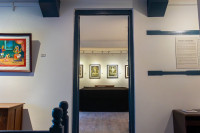
%20(1).jpg&w=200&height=120)
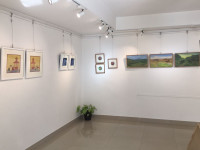
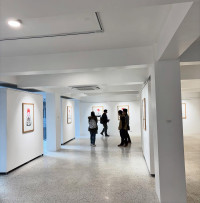
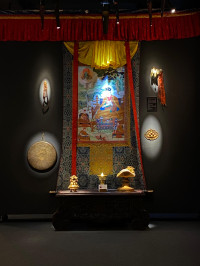
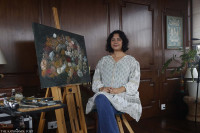


%20(1).jpg&w=300&height=200)

